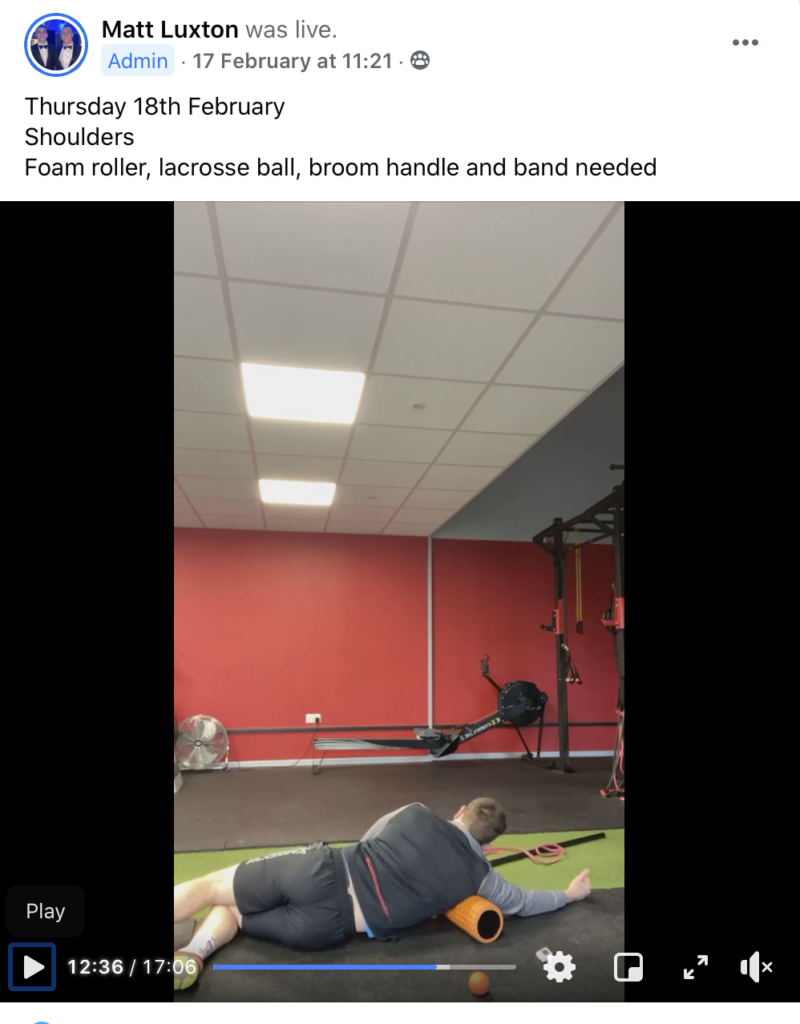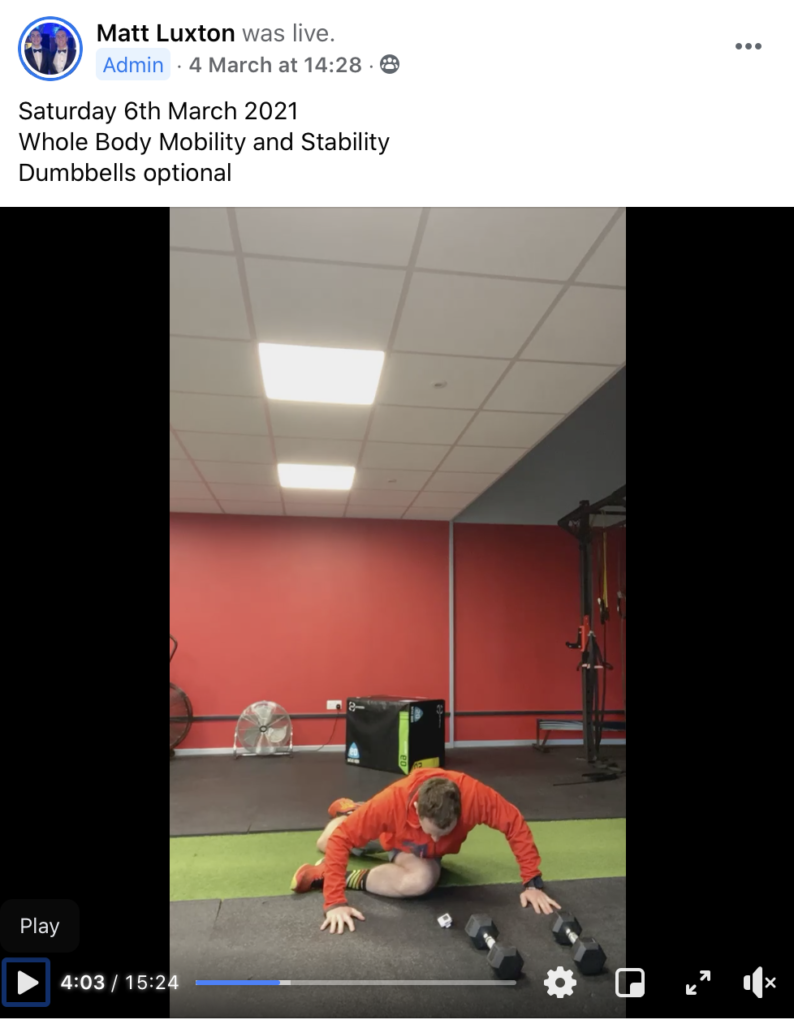Are you MAXIMISING your results?
So we had a discussion on our weekly Q&A recently within one of our online communities about how to best aid recovery.
Recovery between sessions is crucial to getting results and progressing. We wont be discussing sleep, nutrition and hydration here which are the basis of recovery.
Recovery doesn’t just mean doing a long run and then sitting on the sofa or in the car for the rest of the day….. in fact that may slow down your recovery.
If you’ve ever wondered why sometimes you feel great after your workout and at other times it hurts to move, it’s because the type of recovery you complete affects the inflammation, soreness, and lactic acid build-up in your body, as well as your risk of injury. Now those feelings of soreness are not ALWAYS bad, they could just be the physical recognition that you have progressively overreached which is part of getting fitter, stronger and better conditioned.
For us coaches here at Matt Luxton Health and Fitness, Blast Fitness Camps and The Tamar Performance Centre we are big advocates of active recovery. All of our clients are given specific mobility and stability work to aid their recovery. This fits in with our core belief that we should move well and then move often….and not just move often or move well….. they both work together.
How do active, semi passive
and passive recovery differ
from each other?
For the purpose of this blog, I consider Active recovery as any means used to stay physically active while you recover from higher intensity exercise by using gentle, non-strenuous movements.
Brisk walking, easy spin on the bike, foam rolling, mobility sessions, stretching are examples of active recovery that you may use to help get you ready for your next session and minimise risk of injury.
“Semi – Passive” recovery, in contrast, requires minimal movement at all but can include forces placed on you by another person or piece of equipment such as a powerdot or massage gun. We also really like to use neuromuscular electrical stimulation (NMES) to help with speeding up recovery, flushing out lactic acid, and increasing oxygenated blood flow. We also love the effects of consistent myofascial release and recently the applied effects of massage guns such as recoverapro which is really a form of self – myofascial release.Other methods we like are infra red saunas and sports massages.
Passive recovery ….You simply let your body rest while you sit or lie down, for example.
Which Recovery Method
Is Best?

A blend of all 3 is great…..
but lets consider when you may
want to use them…
A great deal of research has gone into examining both types of recovery and the physical and chemical effects on your body, and when we are doing a session that contains multiple repeated maximal power efforts on a bike during a wingate test, passive recovery seems to be best, however when we look at the research that looks at recovery between runs or strength sessions the evidence is clear that using recovery techniques such as the ones we have mentioned above are clear.
There have been studies that have shown that a swim (hydrotherapy) recovery after a run session helps to improve the intensity of a subsequent run session (Lum et al, 2010).
Another study examining swimmers (Rasooli et al, 2012) showed that active recovery dissipated the majority of lactatethat had accumulated in their blood, and would have otherwise settled in their tissues. These results are likely to occur as:
- You promote blood flow and lymph function after your strenuous exercise, thus bringing more oxygen to the area worked.
- The increased blood flow helps reduce the length of time inflammation processes are present.
- You get better lactate clearance and buffering of the acid as a result of active
- Because you’re not focusing on going hard and fast, you get the opportunity to focus on maximising your technique. Remember we at MLHF, Blast Fitness Camps and Tamar Performance Centre are big advocates of the saying “ First Move Well, Then Move Often “
So How Do You Use Active Recovery?
There are three primary ways to incorporate active recovery at different stages of your physical activity.
So….between sets...
From the research my suggestion is that you keep this REALLY LIGHT of you are aiming for MAX power efforts in a session. If you’re running in intervals or using weights at the gym, you can either completely stop between your sets (passive recovery) or stay mobile (active recovery). If you are not performing multiple MAX POWER efforts (more than 2) then continuing to walk and move your body while you prepare for your next set is how you recover actively.
The second is when you cool down immediately after your workout. When you’ve finished that swim, bike, run or strength session, you can either lay down on the floor and catch your breath (passive recovery) or continue to walk (active recovery). I suggest the later.
HERE’s the winner! Lastly, you can actively recover in the days after your strenuous workout. Do not sit on your bum and expect to feel amazing the next day or day after. Use a mobility and movement session to get yourself limbered up for all the reasons I have discussed already (reduced lactate,improved oxygenation, better tissue quality etc).
Examples Of Active Recovery
Active recovery can come in a range of forms – with the constant theme of it being lower impact and slower-paced than your original form of exercise. Unlike stretches that only last a few minutes, active recovery should last between 20 and 40 minutes, and your heart rate should remain above its resting rate. As such, your active recovery may include:
- Walking
- Mobility and movement sessions
- Gentle running
- Cycling
- Pilates or yoga
- Swimming (provided its not high intensity for you).
- Using a foam roller
- Gentle gym sessions (less than 50% your normal weight)…. We use this strategy in de-load weeks when we are breaking between a clients block of training. Again an example of not just doing nothing.
Then you have your NMES devices such as Powerdot and then the massage guns such as the recoverapro (https://recovapro.co.uk ) which I have and really like. Here is my discount code which I got for my clients: MATTHAF
What Happens When You’re
Getting Pain Or
Have An Injury?
If you’ve sustained an injury during your training or are starting to get pain when you exercise, you’ve got to be very mindful and careful about both your exercise and your recovery. This is to ensure that the movements you’re doing help you recover, and don’t worsen the damage. This is where a physiotherapist or sports therapist may be really useful to you as they can see you in person.

If you would like to join our online community where we coach these very mobility and movement sessions you absolutely can and we are offering a FREE 5 Day trial if you want to join us simply email admin@blastfitnesscamps.co.uk and we will give you the instructions you need.
Matt Luxton
Matt Luxton Pg.Dip, BSc(Hons), MMA-CSCC, Pn1
Owner of MattLuxtonHealthandFitness& The Tamar Performance Centre
VotedCornwall’s Best Fitness Instructor 2016
VotedThe UK’s Most Innovative Fitness Entrepreneur 2012
International Best Selling Author ofThe Fad Free Fitness Formula
Author ofThe Hot to Trot Cook BookandThe Equestrian Athlete Plan
Email: mattluxtonpa@gmail.com / Phone: 07841 136302